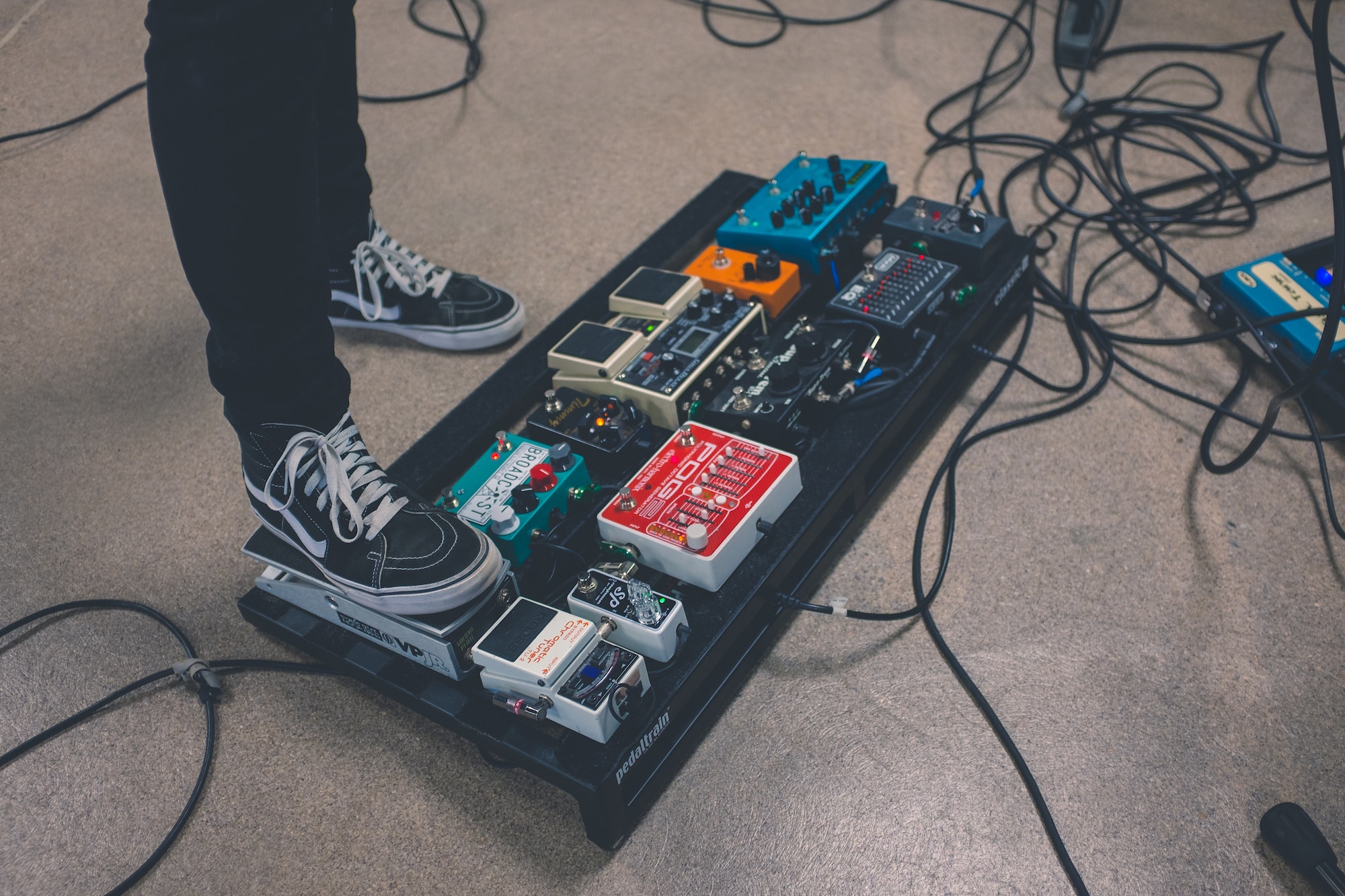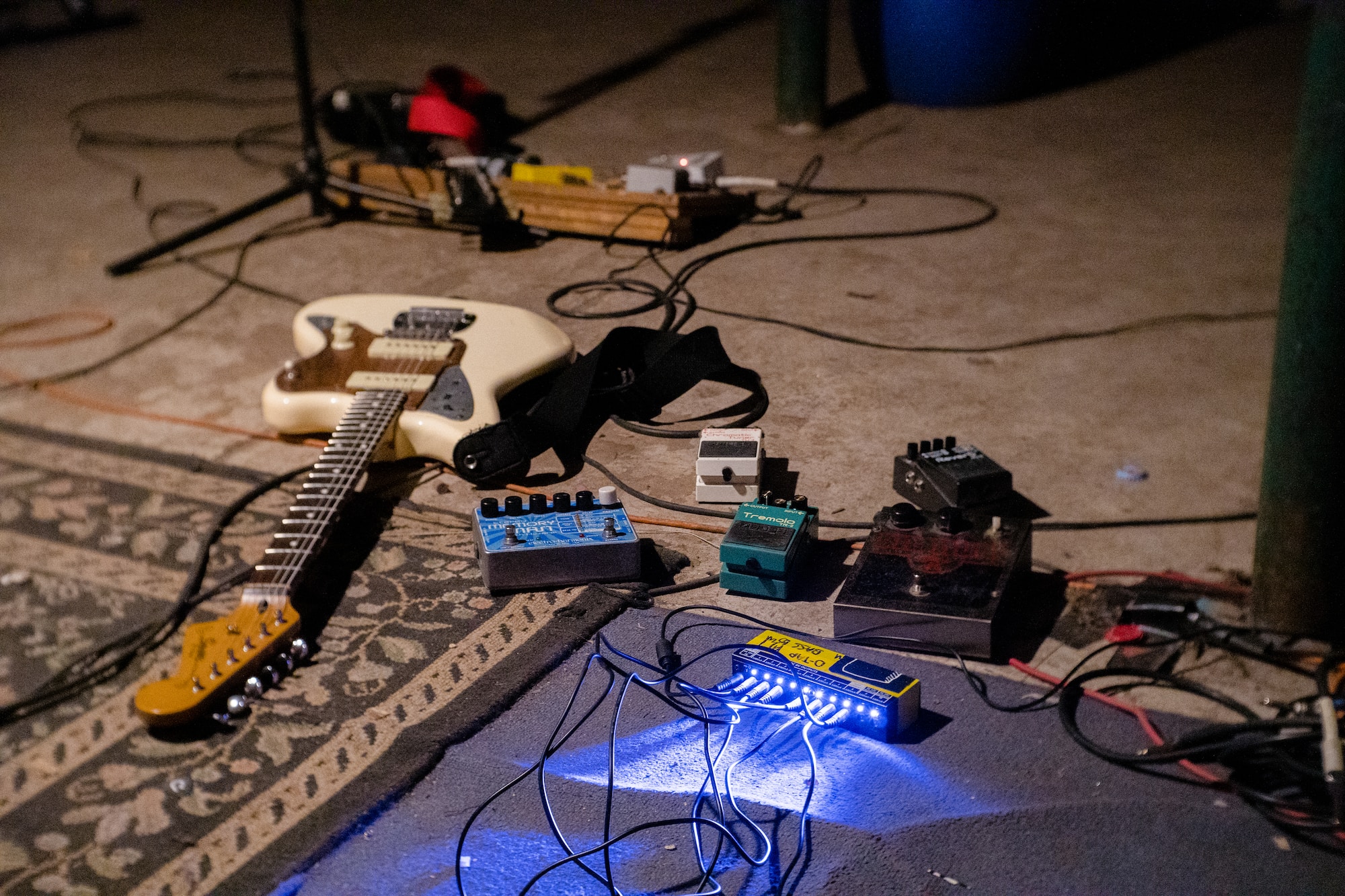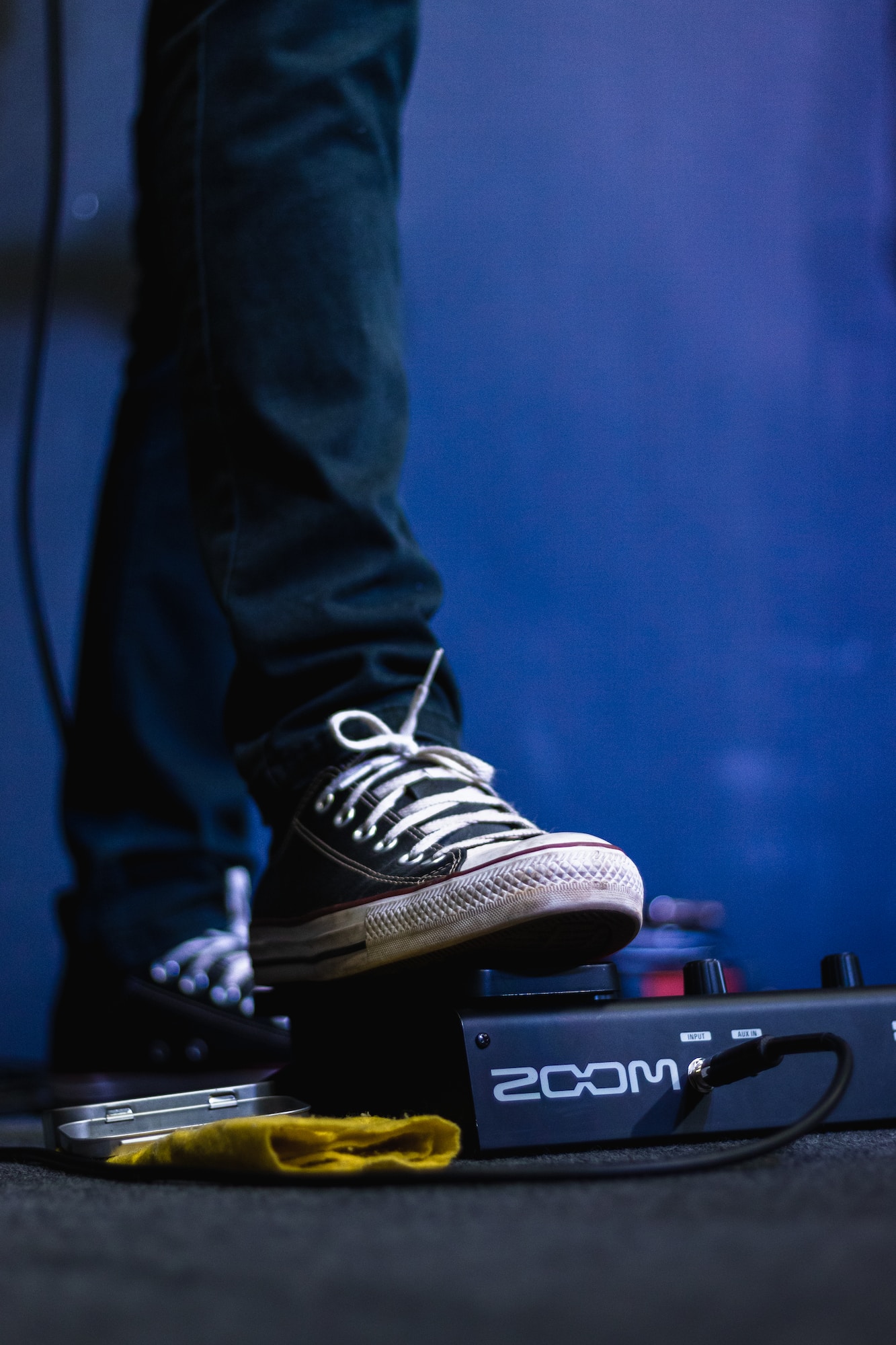You probably need assistance with your performance if you believe that you do not need guitar pedals. On the other hand, having a few pedals might be advantageous for both you and your guitar in a variety of ways.
Here is a collection of the best acoustic guitar pedals to aid you on your guitar-playing adventure. These pedals may help confirm what you may already know, shed light on what you don’t, and help you quickly create a vast and extremely adaptable ear for your sound.
Why You Need Pedals
Pedals may help you tune your guitar, change the loudness, or even get rid of annoying sounds for a cleaner overall sound. They can also assist in making distinctive sound effects by manipulating your guitar tones.
All types of guitar pedals, some of which even operate with keyboards, are compatible with electric guitars, bass guitars, and acoustic (with pickup) guitars.
Guitar effects are often mounted on the floor for convenience and take the shape of a foot pedal with control knobs, buttons, and switches. Guitarists typically arrange them on a specially designed “pedalboard” and use just one foot to stomp or kick the pedals to turn them on and off during a song or performance.

How Do They Work?
The next obvious step is to consider where else you can take your sound after picking up a guitar and fiddling with your amp’s settings to acquire that tone you’ve been looking for. When this happens, guitar pedals can help by allowing you to manipulate your guitar sounds in ways that aren’t feasible with most built-in amp settings.
For a guitar pedal to function, a guitar’s output signal must first be modified before continuing to another pedal or an amplifier with either analog or digital techniques.
Depending on the sound an analog pedal is aiming to make, the electrical signal from a guitar is routed via transistors, resistors, capacitors, diodes, and other components to produce a variety of sounds.
On the other hand, digital pedals function by sampling the electrical signal from your instrument, translating it to binary code, and then modifying that code using an effects algorithm before converting it back to an electrical signal and sending it on.
Portable pedals for guitar and bass are frequently lovingly referred to as “stomp boxes” because of their foot-activated design. The signal flow for these effects pedals is simple: plug your guitar into the pedal’s “input” jack and the pedal’s “output” jack into your amp. These pedals are placed in between your guitar and the amp.
You may combine multiple pedals to create your own effects chain. Experimentation is essential while determining the pedal order. Switches, knobs, and buttons on guitar pedals are used to tweak several effect parameters.
A platform known as a pedalboard is where many musicians mount many guitar pedals for mobility, convenience, and ease of setup. The majority of guitar pedals need electricity and either run on 9-volt batteries or an AC power source (which plugs into a wall outlet), and most pedalboards include power connectors.

Must-Have Guitar Pedal Types
Below is a list of a few effect pedals that any guitarist can mix and match with a unique effect chain to develop their own pedalboard set. These pedals are in any particular order.
Distortion Pedal
One of the most often used guitar foot pedals among beginners and seasoned guitarists is the distortion pedal which has been in more than a hundred songs if you have even a passing interest in electric guitars.
Alternative rock and heavy metal music are both characterized by the same powerful, aggressive sound. The only potential drawback is that it obscures the guitar’s true tone.
Overdrive Pedal
The overdrive pedal is a popular choice because of its flexibility, much like the distortion pedal. It’s frequently mistaken for a distortion pedal since it adds vitality to your guitar tones by providing a similar crunchy, gritty sound.
However, it offers better sustain and preserves more of the guitar and amplifier’s tone. It works well for pop, funk, and country music as well as the traditional rock and blues genres.
Boost Pedal
The clean boost effect pedal is the most basic. It essentially does nothing more than increase your guitar’s signal. Because it gives us more signal to strike the front end of our amp, guitar players enjoyed this. The input portion of your amp will be driven harder and will provide a little more gain at this higher volume level.
Delay Pedal
The delay pedal, as the name suggests, delays the sound signals coming from your guitar and plays them back, like an echo. The pedal generally allows for adjustment of the number of repetitions (feedback), the feedback gain, and the intervals between repetitions.
Other parameters that can be found in a pedal like this are delay type, modulation, and sync controls, all of which are complex enough to be explained as a topic for another day.
Reverb Pedal
Reverb produces a similar effect as delay, but its audio is more authentic. It simulates the audio reflections in a room or given space, like a hall or bedroom. This pedal creates a more complex sound, especially for clean guitar tones, although amplifiers often include knobs to adjust your tone.
Wah Pedal
Due to the “wah” sound it produces with each step of the pedal, the Wah guitar pedal ranks as one of the simplest to discern but can be confusing to learn at first.
Unlike other pedals, the wah pedal has to be manually pressed to produce the louder, more noticeable “wah” sound and manually released to produce a “mid-centered” tone, though there are other pedals that offer more features that change your tone.
It should be mentioned that utilizing the wah pedal might demand some expertise to get your desired sound, even though it deserves a spot on your pedalboard.

Chorus Pedal
Chorus pedals combine sounds with tiny changes in timbre and pitch to simulate the impact that choirs and orchestras create organically.
A chorus is a modulation effect, but the modulation we hear is produced by delaying the wet signal for a very brief duration, causing the doubling effect we hear. The audio signal is split, with part of the signal receiving a slight delay and a series of modulation while the the dry guitar tone is left unaffected.
Phaser Pedal
The phaser pedal produces distinct sweeping sounds with adjustable peaks and dips in the guitar tone, much like the chorus pedal. This pedal includes features like adjustable modulation rate, depth (dry/wet), feedback, and more. Whenever the same note or chord is repeatedly played, the phaser pedal effect is most perceptible.
Flanger Pedal
One of the most distinctive effects available is the flanger, which is renowned for its sweeping tones, similar to the sound of a jet, and is also a modulation effect. A duplicate of the original signal is delayed by the flanger and combined with the dry signal. The swooshing effect is brought on by the shifting of time.
Conclusion
Guitar playing does not require the use of pedals. To make music, an electric guitar just has to be plugged into an amplifier. The most obvious justification is to have more effects that could or might not be usable with only a guitar and amp.
Having said that, the ability to quickly switch between effect settings with your foot is the most useful reason to own an effects pedal or effect chain. By doing this, you can keep playing without taking your hands off the guitar or your lips off the microphone.
Therefore, even if they are unquestionably not required, pedals may make your performance sound much more dynamic and intriguing while also giving your guitar a wide range of distinctive characteristics.
